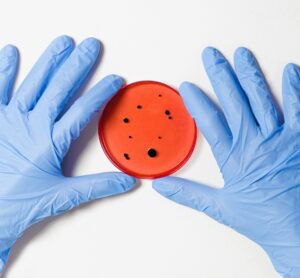Airway clearance is really important in cystic fibrosis and other forms of bronchiectasis. By dedicating time to regularly removing mucus or sputum from your chest, you give yourself every chance to be the best version of yourself. Let’s look closer at the why and how.
Think of the lungs as an inverted oak tree. The trachea or wind-pipe is the tree trunk and this divides many times until the airways reach tiny air-filled sacs or alveoli where oxygen is absorbed and carbon dioxide removed from the body (using the tree metaphor, these would be the leaves or buds). When small airways get plugged up with thick mucus, air doesn’t reach the alveoli and these parts of your lung don’t take part in breathing. But that’s just half the story.
Blocked airways with sticky mucus form warm, humid and protected environments for bacteria to live and multiply. If those airways are not cleared, your body tries to fight the bacteria by creating inflammation and producing more mucus. Over time these effects lead to loss of lung function and set you up for repeated episodes of infections or bronchitis. Over a longer period of time the airways become so beaten up that more unusual and hardy bacteria get a hold and can cause more severe infections. So keep those lungs clear!
HOW DO I DO AIRWAY CLEARANCE?
There are different ways to clear your lungs. Hopefully your doctor will have spoken to you about some of these. All need your active participation and sometimes medications aid the process. The premise of each of these is (i) moving turbulent air behind the mucus, (ii) agitate it free and (iii) move it to an area of the lung where you can cough it out.
Coughing & Huffing
Imagine you wanted to fog up a mirror. You would take a deep breath, hold it for a couple of seconds then do a forced, prolonged exhalation through your mouth – this is a huff. This simple technique sucks in air behind mucus plugs in the small airways and the exhalation moves mucus to the larger airways to cough out.
Chest percussion
In this technique a second person is needed to gently percuss different parts of your chest with you lying in different positions. The use of flat or cupped hands uses vibration to dislodge sticky mucus from different regions of the lung. You then huff or cough any mucus which migrates to larger airways of your lung.
High-frequency chest wall oscillation vest
This is a device which can be prescribed by your doctor. It is a vest with velcro straps which you wear connected to a unit which is powered either by battery or a plug. When worn snugly with the machine on, it causes your chest to move and in and out at high frequency creating moving air in the small airways. This leads to mucus to migrate up the airways for you to cough out.
Positive expiratory pressure (PEP)
PEP devices are simple, handheld tubes which create resistance when you breath out through them. Like when blowing up a balloon, the resistance will open up all your airways and air will move behind any mucus plugs. As you can probably tell by now, getting air behind the mucus is the goal to dislodge sticky mucus.
Airway oscillating device (AOD)
These are very similar to PEP devices except they generate vibration as well as resistance when you blow through them. The vibration reflects back into your lungs and shakes up the mucus while the resistance opens small airways helping get air behind the mucus and moving it to larger airways.
What medications can help this process?
Your doctor may prescribe one or more medications to further help your airway clearance. Broadly speaking, they fall into two categories: mucus thinners (mucolytics) and airway wideners (bronchodilators). When doing airway clearance, always start with the bronchodilator medication, then inhale the mucolytic, then do the airway clearance technique advised by your doctor. If you have also been prescribed an inhaled antibiotic, this should be administered at the end of the airway clearance session.
Bronchodilators
Medications such as albuterol, ipratropium, levalbuterol (or a combination), when inhaled, act on the tiny muscles in the airways causing them to relax and open the airways. These are the same medications used in asthma to treat chest tightness and wheeze. If you plan on doing an airway clearance technique, a good place to start is opening the airways as much as possible. These may be prescribed in an inhaler or through a nebulizer depending on what your doctor has recommended.
Mucolytics
Over-the-counter oral medications like guaifenesin (often in forms of Mucinex and other common cold remedies) and inhaled medications such as hypertonic saline and acetylcysteine (mucomyst) help thin mucus to make it easier to cough out. Dornase Alfa (pulmozyme) is a mucolytic specifically used for patients with cystic fibrosis. Hypertonic saline (3%, 3.5% and 7% preparations) thin mucus by attracting water into the airways (water always follows salt) and hydrating the mucus making it thinner. Mucomyst acts in a similar way pulling water into the airway to secretions easier to move up the lung. In 2019, the FDA approved inhaled Mannitol (Bronchitol) as a dry powder mucolytic to treat patients with cystic fibrosis through the same mechanism.









